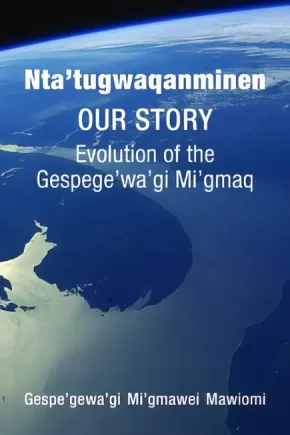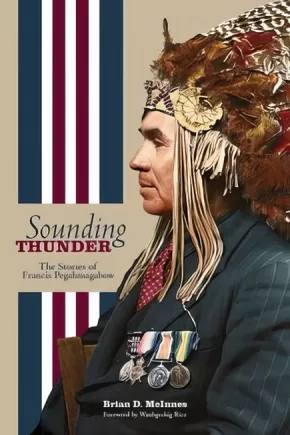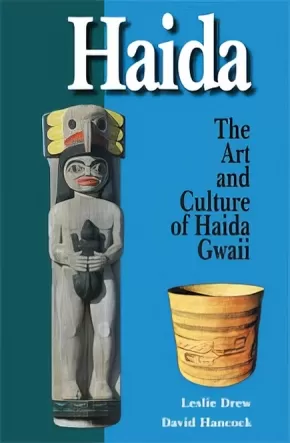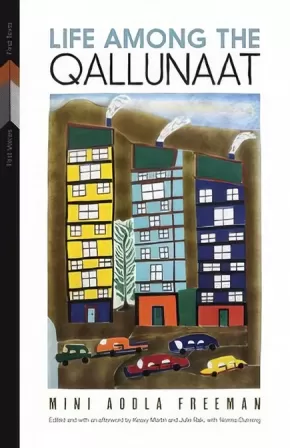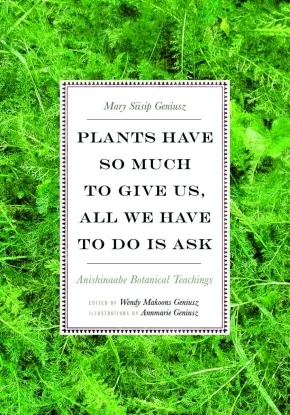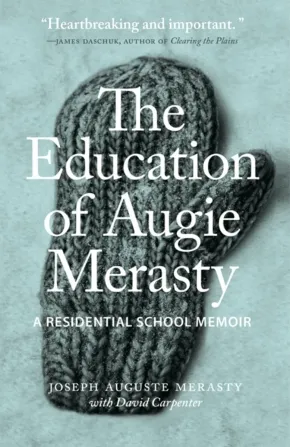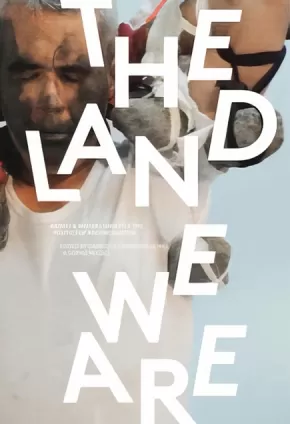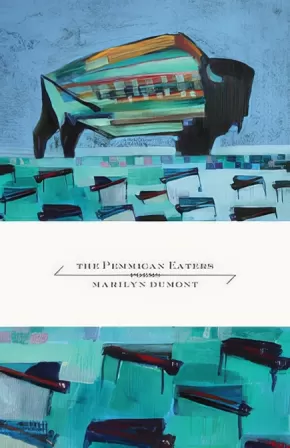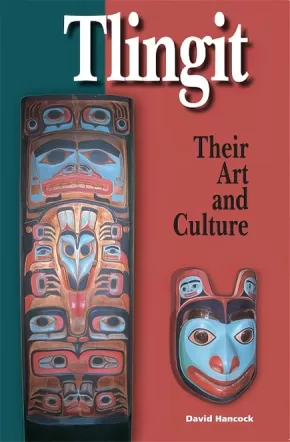
Indigenous Peoples in Canada
301
-
315
of
373 Results;
Sort By
Go To
of 25
mâci-nêhiyawêwin: Beginning Cree
$34.95
Artists:
Format:
Coil Bound
Text Content Territories:
Indigenous Canadian; First Nations; Cree (Nehiyawak);
ISBN / Barcode: 9780889774353
Synopsis:
Synopsis:
Designed as an introduction for Cree language learners, Beginning Cree acts as a self-study aid--a much-needed resource in today's world where most students cannot speak Cree fluently. Basic grammar units and everyday vocabulary items guide the student through the building blocks of the language, and expansion drills and exercises reinforce lessons and prepare the student for further study. With over 100 delightful illustrations, Beginning Cree grounds the language in traditional and contemporary contexts.
Educator & Series Information
This book is recommended for ages 12+.
Table of Contents
Chapter One: Introduction
Chapter Two: Nouns
Chapter Three: Prepositions and Pronouns
Chapter Four: Animate Intransitive Verbs
Chapter Five: Inanimate Intransitive Verbs
Chapter Six: Possessives: Kinship Terms
Chapter Seven: Transitive Inanimate Verbs
Chapter Eight: Transitive Animate Verbs
Verb Charts
Conjugation Patterns
Vocabulary List
Bibliography
Notes
The Canadian Indigenous Books for School list recommends this resource for Grades 1-12 for these subject areas: Indigenous Language Studies, Language Studies.
Part of the Indigenous Languages for Beginners series.
The book is specifically geared towards learners of the Plains Cree "Y" dialect, also known as the "Y" dialect.
Additional Information
165 pages | 8.50" x 11.00" | black and white illustrations | spiral bound
Nta'tugwaqanminen: Our Story: Evolution of the Gespege'wa'gi Mi'gmaq
$19.95
Format:
Paperback
Text Content Territories:
Indigenous Canadian; First Nations; Mi'kmaq;
ISBN / Barcode: 9781552667712
Synopsis:
Synopsis:
Nta’tugwaqanminen provides evidence that the Mi’gmaq of the Gespe’gewa’gi (Northern New Brunswick and the Gaspé Peninsula) have occupied their territory since time immemorial. They were the sole occupants of it prior to European settlement and occupied it on a continuous basis. This book was written through an alliance between the Mi’gmaq of Northern Gespe’gewa’gi (Gaspé Peninsula), their Elders and a group of eminent researchers in the field with the aim of reclaiming their history, both oral and written, in the context of what is known as knowledge re-appropriation. It also provides non-Aboriginal peoples with a view of how Mi’gmaq history looks when it is written from an Indigenous perspective.
There are two voices in the book — that of the Mi’gmaq of the Gespe’gewa’gi, including the Elders, as they act as narrators of the collective history, and that of the researchers, who studied all possible aspects of this history, including advanced investigation on place names as indicators of migration patterns.
Nta’tugwaqanminen speaks of the Gespe’gewa’gi Mi’gmaq vision, history, relation to the land, past and present occupation of the territory and their place names and what they reveal in terms of ancient territorial occupation. It speaks of the treaties they agreed to with the British Crown, the respect of these treaties on the part of the Mi’gmaq people and the disrespect of them from the various levels of governments. This book speaks about the dispossession the Mi’gmaq of Gespe’gewa’gi had to endure while the European settlers illegally occupied and developed the Gaspé Peninsula to their own advantage and the rights and titles the Mi’gmaq people still have on their lands.
Author Note: The Gespe’gewa’gi Mi’gmawei Mawiomi is the organization that represents the three communities of the northern part of Gespe’gewa’gi. Research associates Richard Jeannotte and Donald Jeannotte, both Gespe’gewa’gi Mi’gmaqs, and Danielle E. Cyr, senior scholar at York University, wrote the seven first chapters. Troy Jerome, current Mi’gmawei Mawiomi Secretariat Executive Director / Nutewistoq wrote Chapter 8.
Educator Information
This book would be useful for courses in social studies, history, and English language arts. Recommended for grades 8-12, as well as college/university courses.
This book would be useful for courses in social studies, history, and English language arts. Recommended for grades 8-12, as well as college/university courses.
Table of Contents
Foreword by Satsun (Herb George)
Introduction: How We Came to Write Nta’tugwaqanminen
Our Territory in Prehistoric Times
Our Place Names
Our Creation Story and Fundamental Myths
Our Historical Presence in Gespe’gewa’gi
The Treaty Relationship Between Mi’gmaq of Gespe’gewa’gi and the British Crown
Good Faith and Dispossession
Our Constitutional Rights as Gespe’gewa’gi Mi’gmaq
The Gespe’gewa’gi Mi’gmaq in Contemporary Times
Conclusion: Our Story Continues
Notes
Bibliography
Index
Foreword by Satsun (Herb George)
Introduction: How We Came to Write Nta’tugwaqanminen
Our Territory in Prehistoric Times
Our Place Names
Our Creation Story and Fundamental Myths
Our Historical Presence in Gespe’gewa’gi
The Treaty Relationship Between Mi’gmaq of Gespe’gewa’gi and the British Crown
Good Faith and Dispossession
Our Constitutional Rights as Gespe’gewa’gi Mi’gmaq
The Gespe’gewa’gi Mi’gmaq in Contemporary Times
Conclusion: Our Story Continues
Notes
Bibliography
Index
Additional Information
320 pages | 6.00" x 9.00"
320 pages | 6.00" x 9.00"
Sounding Thunder: The Stories of Francis Pegahmagabow
$24.95
Format:
Paperback
Text Content Territories:
Indigenous Canadian; First Nations; Anishinaabeg; Ojibway;
ISBN / Barcode: 9780887558245
Synopsis:
Synopsis:
Francis Pegahmagabow (1889–1952), a member of the Ojibwe nation, was born in Shawanaga, Ontario. Enlisting at the onset of the First World War, he became the most decorated Canadian Indigenous soldier for bravery and the most accomplished sniper in North American military history. After the war, Pegahmagabow settled in Wasauksing, Ontario. He served his community as both chief and councillor and belonged to the Brotherhood of Canadian Indians, an early national Indigenous political organization. Francis proudly served a term as Supreme Chief of the National Indian Government, retiring from office in 1950.
Francis Pegahmagabow’s stories describe many parts of his life and are characterized by classic Ojibwe narrative. They reveal aspects of Francis’s Anishinaabe life and worldview. Interceding chapters by Brian McInnes provide valuable cultural, spiritual, linguistic, and historic insights that give a greater context and application for Francis’s words and world. Presented in their original Ojibwe as well as in English translation, the stories also reveal a rich and evocative relationship to the lands and waters of Georgian Bay.
In Sounding Thunder, Brian McInnes provides new perspective on Pegahmagabow and his experience through a unique synthesis of Ojibwe oral history, historical record, and Pegahmagabow family stories.
Awards
- Fred Landon Award, Ontario Historical Society (2018)
- American Book Award, Before Columbus Foundation (2017)
Reviews
“Debwemigad Nimkiig gaye Aadizookanag zhawenimaawaad. Brian McInnes has clearly been blessed by the Thunders and Great Storytellers. With Sounding Thunder he has achieved the perfect balance of personal memoir and scholarly inquiry. He shares with readers the stories that have connected one generation to another and in these cycles we find the truth about living. Dibaajimowinan omaada’oozhinang mii igo aanikoobijige.” – Margaret Ann Noodin, Assistant Professor, Department of English, University of Wisconsin
“Debwemigad Nimkiig gaye Aadizookanag zhawenimaawaad. Brian McInnes has clearly been blessed by the Thunders and Great Storytellers. With Sounding Thunder he has achieved the perfect balance of personal memoir and scholarly inquiry. He shares with readers the stories that have connected one generation to another and in these cycles we find the truth about living. Dibaajimowinan omaada’oozhinang mii igo aanikoobijige.” – Margaret Ann Noodin, Assistant Professor, Department of English, University of Wisconsin
“This uniquely intimate portrait illuminates Francis’s commitment to live in a way that reflected the spiritual values of sharing and respect for life, despite his military record of 378 enemy kills for which he became renowned.” – Allyson Stevenson, University of Guelph, Canadian Journal of History
“McInnes’ Sounding Thunder brings complexity and nuance to the story (or stories) of Francis Pegahmagabow’s life. Past authors have portrayed Pegahmagabow alternatively as a warrior, a veteran, and/or a political activist. Certainly, these depictions capture snapshots of his character. But McInnes goes much further, adding breadth and depth to the sketch of the Nishnaabe man from Georgian Bay. He has produced a high-quality piece of historical research that tells an important story of Indigenous peoples as human beings with challenges that exist both within and without the constraints of colonialism.” – Eric Story, Laurier Centre for Military, Strategic and Disarmament Studies
“Sounding Thunder is invaluable for those working in biographical, historical, Indigenous, military and political studies and the general reader. McInnes skillfully contextualizes his subject as one of Canada’s greatest war heroes as well as a member of his family, community, and Anishinaabe people.” – Brock Pitawanakwat, Assistant Professor, Department of Indigenous Studies, University of Sudbury
“Brian McInnes’ book is both elegant and masterful in its weaving of language, spirituality, storytelling, family, community, and physical place on the lands and waters of Georgian Bay as he presents the world and life of his great-grandfather, Francis Pegahmagabow. McInnes’ presentation of family stories in both Ojibwe and English, and his placement of them within their historical and geographical context, underlines Waubgeshig Rice’s claim in his foreword to Sounding Thunder that the book will remain ‘a vital resource for generations to come.’” – Jurors, Fred Landon Award, Ontario Historical Society
Educator Information
This book would be useful for social studies and history courses for students in grades 11 and 12 or at a college/university level.
This book would be useful for social studies and history courses for students in grades 11 and 12 or at a college/university level.
Additional Information
240 pages | 6.00" x 9.00" | 31 b&w illustrations | 5 b&w tables | bibliography
240 pages | 6.00" x 9.00" | 31 b&w illustrations | 5 b&w tables | bibliography
Haida: The Art and Culture of Haida Gwaii
$12.95
Format:
Paperback
Text Content Territories:
Indigenous American; Alaska Native; Haida; Indigenous Canadian; First Nations; Haida;
ISBN / Barcode: 9780888396211
Synopsis:
Synopsis:
The Haida are islanders first and foremost - a people apart. Discover the source of their distinctive culture and the inspirations for their arts.
Let Me See Your Fancy Steps: Story of a Métis Dance Caller
$25.00
Text Content Territories:
Indigenous Canadian; Métis;
ISBN / Barcode: 978-1-926795-83-6
Synopsis:
Synopsis:
“The Gabriel Dumont Institute Press is pleased to be able to preserve and share Jeanne Pelletier’s work and life story through Let Me See Your Fancy Steps—Story of a Métis Dance Caller. The Story of Jeanne Pelletier as told to Sylvie Sara Roy and Wilfred Burton. Jeanne’s achievement as the first female Métis dance caller is, of course, about Métis dance, but it is also about the determination of a young Métis girl who achieves her dream to become a dance caller during a time when this was only done by men.”
This resource includes dance calls for 16 dances and is accompanied by the instructional DVD All My Relations which features dance company V’ni Dansi which is led by renowned dancer and artistic director, Yvonne Chartrand.
Reviews
"The recounting of Jeanne’s work is supplemented throughout the book by testimonials of her former dance students and community members, all of whom praise the dance caller for the substantial impact that she’s had both on their personal lives, as well as the academic and social climates of the Métis community in Saskatchewan. As a Métis myself, I feel lost at times, as if my culture is fuzzy or foreign to me. Reading the life experiences, knowledge, and not to mention the wealth of Métis Jig steps found in this book gave me an overwhelming sense of peace to see research of this caliber and this level of care being invested in my culture. I would highly recommend this book to anyone with an interest in Métis culture and the significance that the jig has to the culture. Anyone who has seen the Métis Jig performed live knows that it is a beautiful and awe-inspiring dance, but after reading Jeanne’s explanations of the cultural significance of the dances, I will now appreciate the dance that much more as a story and celebration of my culture. It is also worth mentioning that entire dance sequences are written out to follow with Jeanne’s notes, and the book includes an instructional DVD." - Ben Charles for SaskBook Reviews
Educator Information
Recommended by Gabriel Dumont Institute for Secondary/Post Secondary/Adult.
Includes a DVD.
Recommended in the Canadian Indigenous Books for Schools 2019-2020 resource list as being useful for grades 5-12 with regard to these subjects: English Language Arts, Physical Education, Social Studies, Teacher Resource.
Life Among the Qallunaat
$24.95
Format:
Paperback
Text Content Territories:
Indigenous Canadian; Inuit;
ISBN / Barcode: 9780887557750
Synopsis:
Synopsis:
Life Among the Qallunaat is the story of Mini Aodla Freeman’s experiences growing up in the Inuit communities of James Bay and her journey in the 1950s from her home to the strange land and stranger customs of the Qallunaat, those living south of the Arctic. Her extraordinary story, sometimes humourous and sometimes heartbreaking, illustrates an Inuit woman’s movement between worlds and ways of understanding. It also provides a clear-eyed record of the changes that swept through Inuit communities in the 1940s and 1950s.
Mini Aodla Freeman was born in 1936 on Cape Hope Island in James Bay. At the age of sixteen, she began nurse's training at Ste. Therese School in Fort George, Quebec, and in 1957 she moved to Ottawa to work as a translator for the then Department of Northern Affairs and Natural Resources. Her memoir, Life Among the Qallunaat, was published in 1978 and has been translated into French, German, and Greenlandic.
Educator & Series Information
Life Among the Qallunaat is the third book in the First Voices, First Texts series, which publishes lost or underappreciated texts by Indigenous writers. This reissue of Mini Aodla Freeman’s path-breaking work includes new material, an interview with the author, and an afterword by Keavy Martin and Julie Rak, with Norma Dunning.
Additional Information
304 pages | 5.50" x 8.50"
Plants Have So Much to Give Us, All We Have to Do Is Ask: Anishinaabe Botanical Teachings
$31.99
Artists:
Editors:
Format:
Paperback
Text Content Territories:
Indigenous Canadian; First Nations; Anishinaabeg;
Reading Level: N/A
ISBN / Barcode: 9780816696765
Synopsis:
Synopsis:
Mary Siisip Geniusz has spent more than thirty years working with, living with, and using the Anishinaabe teachings, recipes, and botanical information she shares in Plants Have So Much to Give Us, All We Have to Do Is Ask. Geniusz gained much of the knowledge she writes about from her years as an oshkaabewis, a traditionally trained apprentice, and as friend to the late Keewaydinoquay, an Anishinaabe medicine woman from the Leelanau Peninsula in Michigan and a scholar, teacher, and practitioner in the field of native ethnobotany. Keewaydinoquay published little in her lifetime, yet Geniusz has carried on her legacy by making this body of knowledge accessible to a broader audience.
Geniusz teaches the ways she was taught—through stories. Sharing the traditional stories she learned at Keewaydinoquay’s side as well as stories from other American Indian traditions and her own experiences, Geniusz brings the plants to life with narratives that explain their uses, meaning, and history. Stories such as “Naanabozho and the Squeaky-Voice Plant” place the plants in cultural context and illustrate the belief in plants as cognizant beings. Covering a wide range of plants, from conifers to cattails to medicinal uses of yarrow, mullein, and dandelion, she explains how we can work with those beings to create food, simple medicines, and practical botanical tools.
Plants Have So Much to Give Us, All We Have to Do Is Ask makes this botanical information useful to native and nonnative healers and educators and places it in the context of the Anishinaabe culture that developed the knowledge and practice.
Additional Information
344 pages | 7.00" x 10.00" | Paperback
The Education of Augie Merasty: A Residential School Memoir (HC) (9 in Stock)
$21.95
Format:
Hardcover
Text Content Territories:
Indigenous Canadian; First Nations; Cree (Nehiyawak);
ISBN / Barcode: 9780889773684
Synopsis:
Synopsis:
The Education of Augie Merasty offers a courageous and intimate chronicle of life in a residential school.
Now a retired fisherman and trapper, Joseph A. (Augie) Merasty was one of an estimated 150,000 First Nations, Inuit, and Metis children who were taken from their families and sent to government-funded, church-run schools, where they were subjected to a policy of "aggressive assimiliation."As Merasty recounts, these schools did more than attempt to mold children in the ways of white society. They were taught to be ashamed of their native heritage and, as he experienced, often suffered physical and sexual abuse.Even as he looks back on this painful part of his childhood, Merasty’s generous and authentic voice shines through.
Awards
- 2016 Burt Award Second Place Winner
Reviews
"At 86, Augie Merasty has been a lot of things: Father. Son. Outdoorsman. Homeless. But now he is a first-time author, and the voice of a generation of residential-school survivors.... The Education of Augie Merasty is the tale of a man not only haunted by his past, but haunted by the fundamental need to tell his own story... one of the most important titles to be published this spring." —Globe and Mail
"[Augie] wrote his memoir to show people the unbelievable atrocities suffered by so many Indigenous people and in the hope that others would come forward to tell their stories of what happened in the residential schools." —Eagle Feather News
"This book is so much bigger than its small size. It is a path to healing. We cannot change history, but we can acknowledge it, learn about it, and remember it." —Prairies North
"The Education of Augie Merasty might be a small book, but it carries a punch to it that all Canadian need to read and understand." —Rabble
"A truly extraordinary memoir by a truly extraordinary man." —Midwest Book Review
"Carpenter's introduction and afterword... allow us to come to better understand Augie's 'sometimes chaotic, sometimes heroic aftermath of his life,' as Carpenter describes his last decade. Where Augie focuses on physical scars, Carpenter's experiences with Augie illustrate the long-term impacts on his residential school experience. And with The Education of Augie Merasty, he helps Merasty--who could be any number of individuals we each pass on the street--find his voice." —Active History
"Unsettling and profound, and good." —Blacklock's Reporter
"In this book I have seen horror through eyes of a child." —James Daschuk, author of Clearing the Plains
"A story in which our entire nation has an obscure and dark complicity." —David Carpenter, co-author of The Education of Augie Merasty and author of The Gold and other books
Educator Information
The Canadian Indigenous Books for Schools list recommends this resource for Grades 9-12 English Language Arts and Social Studies.
Caution: Mature subject matter and descriptions of discrimination, sexual/physical violence, and substance abuse.
Additional Information
105 pages | 4.25" x 6.53" | Hardcover
The Land We Are: Artists and Writers Unsettle the Politics of Reconciliation
$24.95
Editors:
Format:
Paperback
Text Content Territories:
Indigenous Canadian;
ISBN / Barcode: 9781894037631
Synopsis:
Synopsis:
The Land We Are is a stunning collection of writing and art that interrogates the current era of reconciliation in Canada. Using visual, poetic, and theoretical language, the contributors approach reconciliation as a problematic narrative about Indigenous-settler relations, but also as a site where conversations about a just future must occur. The result of a four-year collaboration between artists and scholars engaged in resurgence and decolonization, The Land We Are is a moving dialogue that blurs the boundaries between activism, research, and the arts.
The contributors to this book include leading artists and scholars engaged in questions of resurgence, restitution, and decolonization.
Contributors: Jordan Abel, Leah Decter, Jonathan Dewar, David Garneau, Ayumi Goto, Allison Hargreaves, Gabrielle L'Hirondelle Hill, Jaimie Isaac, David Jefferess, Layli Long Soldier, The New BC Indian Art and Welfare Society Collective, Sophie McCall, Peter Morin, Skeena Reece, Dylan Robinson, Sandra Semchuk, Adrian Stimson, Clement Yeh, and Keren Zaiontz.
Reviews
"This beautifully produced, richly illustrated volume not only offers readers a visual journey into the featured artistic installations and performance pieces, but through its creative use of text and graphic design is itself an artistic statement on reconciliation." --Winnipeg Free Press
Educator Information
Recommended for students in grades 11 and 12, as well as at a college/university level.
Additional Information
240 pages | 6.50" x 9.50"
The Pemmican Eaters
$18.95
Format:
Paperback
Text Content Territories:
Indigenous Canadian; Métis;
ISBN / Barcode: 9781770412415
Synopsis:
Synopsis:
A picture of the Riel Resistance from one of Canada’s preeminent Métis poets.
With a title derived from John A. Macdonald’s moniker for the Métis, The Pemmican Eaters explores Marilyn Dumont’s sense of history as the dynamic present. Combining free verse and metered poems, her latest collection aims to recreate a palpable sense of the Riel Resistance period and evoke the geographical, linguistic/cultural, and political situation of Batoche during this time through the eyes of those who experienced the battles, as well as through the eyes of Gabriel and Madeleine Dumont and Louis Riel.
Included in this collection are poems about the bison, seed beadwork, and the Red River Cart, and some poems employ elements of the Michif language, which, along with French and Cree, was spoken by Dumont’s ancestors. In Dumont’s The Pemmican Eaters, a multiplicity of identities is a strengthening rather than a weakening or diluting force in culture.
Awards
- Winner of the 2016 Stephan G. Stephansson Award for Poetry
Reviews
“A rollicking poem about the fiddle ('the first high call of the fiddle bids us dance/baits with its first pluck and saw of the bow/reels us, feet flick — fins to its lure and line') becomes a statement of cultural pride and defiance — much like The Pemmican Eaters as a whole.” — Toronto Star
“Dumont’s work is visual and evocative, highlighting recurring symbols and images of a natural world that will be familiar to any dweller of the Prairies . . . The Pemmican Eaters builds off the poet’s earlier work and highlights a writer who has mastered both craft and voice.” — Quill & Quire
“Dumont honours Métis traditions in music and beadwork in a number of lyrically driven poems. The Pemmican Eaters is a statement of cultural pride and defiance, much like Marilyn herself.” — CBC News Online
“Marilyn Dumont uses both rhythmic and free verse to provide a brilliant and insightful look at Métis and Cree people.” — Scene Magazine
Educator Information
This book would be useful for grades 9 - 12 in courses such as creative writing, English language arts, and social studies. Also recommended for students a college/university level.
Additional Information
96 pages | 5.50" x 8.50"
The Reason You Walk
$22.00
Format:
Paperback
Text Content Territories:
Indigenous Canadian; First Nations; Anishinaabeg; Ojibway;
ISBN / Barcode: 9780143193555
Synopsis:
Synopsis:
When his father was given a diagnosis of terminal cancer, Winnipeg broadcaster and musician Wab Kinew decided to spend a year reconnecting with the accomplished but distant aboriginal man who'd raised him. The Reason You Walk spans the year 2012, chronicling painful moments in the past and celebrating renewed hopes and dreams for the future. As Kinew revisits his own childhood in Winnipeg and on a reserve in Northern Ontario, he learns more about his father's traumatic childhood at residential school. An intriguing doubleness marks The Reason You Walk, a reference to an Anishinaabe ceremonial song. Born to an Anishinaabe father and a non-native mother, he has a foot in both cultures. He is a Sundancer, an academic, a former rapper, a hereditary chief, and an urban activist. His father, Tobasonakwut, was both a beloved traditional chief and a respected elected leader who engaged directly with Ottawa. Internally divided, his father embraced both traditional native religion and Catholicism, the religion that was inculcated into him at the residential school where he was physically and sexually abused. In a grand gesture of reconciliation, Kinew's father invited the Roman Catholic bishop of Winnipeg to a Sundance ceremony in which he adopted him as his brother. Kinew writes affectingly of his own struggles in his twenties to find the right path, eventually giving up a self-destructive lifestyle to passionately pursue music and martial arts. From his unique vantage point, he offers an inside view of what it means to be an educated aboriginal living in a country that is just beginning to wake up to its aboriginal history and living presence.
Invoking hope, healing and forgiveness, The Reason You Walk is a poignant story of a towering but damaged father and his son as they embark on a journey to repair their family bond. By turns lighthearted and solemn, Kinew gives us an inspiring vision for family and cross-cultural reconciliation, and a wider conversation about the future of aboriginal peoples.
The Right to Be Cold: One Woman's Story of Protecting Her Culture, the Arctic and the Whole Planet
$22.00
Format:
Paperback
Text Content Territories:
Indigenous Canadian; Inuit;
Grade Levels: 12; University/College;
ISBN / Barcode: 9780143187646
Synopsis:
Synopsis:
One of Canada's most passionate environmental and human rights activists addresses the global threat of climate change from the intimate perspective of her own Arctic childhood.
The Arctic ice is receding each year, but just as irreplaceable is the culture, the wisdom that has allowed the Inuit to thrive in the Far North for so long. And it's not just the Arctic. The whole world is changing in dangerous, unpredictable ways. Sheila Watt-Cloutier has devoted her life to protecting what is threatened and nurturing what has been wounded. In this culmination of Watt-Cloutier's regional, national, and international work over the last twenty-five years, The Right to Be Cold explores the parallels between safeguarding the Arctic and the survival of Inuit culture, of which her own background is such an extraordinary example. This is a human story of resilience, commitment, and survival told from the unique vantage point of an Inuk woman who, in spite of many obstacles, rose from humble beginnings in the Arctic to become one of the most influential and decorated environmental, cultural, and human rights advocates in the world.
Awards
- 2015 Ontario Historical Society Huguenot Society of Canada Award Winner
Reviews
"Loss, suppression and ultimate rediscovery of voice are themes that run through this courageous and revelatory memoir." —Naomi Klein, The Globe and Mail
"This is a book that needs to be read as the North becomes central to our future. It offers a perspective grounded in the culture and wisdom of northern people, seen through the lens of a remarkable woman as they seek to preserve 'The Right to be Cold.'" —Lloyd Axworthy, academic, former Minister of Foreign Affairs, and Nobel Peace Prize nominee
"This is a moving and passionate story from a committed woman who has bridged the ice age to the digital age. Her sophisticated views on the environment and the way the world works from her engaged involvement are brilliant and convincing." —The Right Honourable Adrienne Clarkson, journalist and former Governor General
Educator Information
This resource is also available in French: Le droit au froid: Combat d'une femme pour proteger sa culture, l'Arctique et la planete
Additional Information
|
Tlingit: Their Art and Culture
$12.95
Format:
Paperback
Text Content Territories:
Indigenous American; Alaska Native; Tlingit;
ISBN / Barcode: 9780888395306
Synopsis:
Synopsis:
When you visit southeast Alaska you encounter the Tlingit Indians and their very rich lands, diversified culture and wondrous art forms. You can visit from cruise ships, from the Alaska Ferry system, from private boats, from the air, or by following the highway systems though Hyder, Skagway or Haines.
The richness of the Tlingit culture flows from the incredible diversity and abundance of the surrounding seas: its fish, whales and sea life, the prolific clam beaches, and the incredible wealth from the spawning fish that feed the bears and eagles and nutrify the dense coniferous forest. The ease with which the natives could extract a good living provided much extra time to devote to developing an extraordinarily rich culture and a prolific art, as well as the warring and slave trading that set the northwest coast peoples apart from the other more food-deprived North American native peoples.
This book will give you a glimpse into the richess of their culture and art and afford you some understanding how the Tlingit evolved as part of this productive land.
Unsettling Canada: A National Wake-Up Call
$29.95
Format:
Paperback
Text Content Territories:
Indigenous Canadian;
ISBN / Barcode: 9781771131766
Synopsis:
Synopsis:
Unsettling Canada, a Canadian bestseller, is built on a unique collaboration between two First Nations leaders, Arthur Manuel and Grand Chief Ron Derrickson.
Both men have served as chiefs of their bands in the B.C. interior and both have gone on to establish important national and international reputations. But the differences between them are in many ways even more interesting. Arthur Manuel is one of the most forceful advocates for Aboriginal title and rights in Canada and comes from the activist wing of the movement. Grand Chief Ron Derrickson is one of the most successful Indigenous businessmen in the country.
Together the Secwepemc activist intellectual and the Syilx (Okanagan) businessman bring a fresh perspective and new ideas to Canada’s most glaring piece of unfinished business: the place of Indigenous peoples within the country’s political and economic space. The story is told through Arthur’s voice but he traces both of their individual struggles against the colonialist and often racist structures that have been erected to keep Indigenous peoples in their place in Canada.
In the final chapters and in the Grand Chief’s afterword, they not only set out a plan for a new sustainable indigenous economy, but lay out a roadmap for getting there.
Reviews
“This is the back story of both grassroots and backroom struggles that created the context in which we find ourselves today, one in which a new generation of First Nations leaders is demanding sovereignty and self-determination, and more and more non-Indigenous Canadians finally understand that huge swaths of this country we call Canada is not ours - or our government's - to sell.” — Naomi Klein, from the Foreword
“Pragmatic and helpful, this is a timely book for our fraught and political moment” — Quill & Quire
"Unsettling Canada is a breathtakingly beautiful story of Indigenous resistance, strength, and movement building. Unsettling Canada echoes the power of George Manuel's The Fourth World, centering the heart of the narrative deep inside a kind of Indigenous intelligence rarely shared outside our communities. This is the critical conversation that Canada and Indigenous peoples must have because it is centred on land, and, therefore, it is one of the most important books on Indigenous politics I've ever read." — Leanne Betasamosake Simpson, author of Dancing on Our Turtle's Back
Educator Information
This resource would be useful for courses in history, social justice, political science, and social studies. Recommended for students in grades 10 to 12 or those at a college/university level.
CONTENTS
Foreword Naomi Klein
Chapter 1 The Lay of the Land
Chapter 2 Institutionalizing a People: Indian Hospital, School, Jail
Chapter 3 White Paper to Red Paper: Drawing the Battle Lines
Chapter 4 Occupy Indian Affairs: Native Youth in Action
Chapter 5 Aboriginal Title: No Surrender
Chapter 6 The Constitution Express: A Grassroots Movement
Chapter 7 Don’t Let Them Bully You: A Business Interlude
Chapter 8 A Chief’s Concerns: Finances, the People, and the Land
Chapter 9 Upping the Ante: RCAP and a Landmark Court Decision
Chapter 10 The Battle in the Forest: The Trade in Indian Trees
Chapter 11 Sun Peaks to Geneva: Playgrounds and Fortresses
Chapter 12 Taking It to the Bank: Accounting for Unpaid Debt
Chapter 13 The Fourth World: A Global Movement
Chapter 14 Line of Defence: Side by Side for Mother Earth
Chapter 15 No Half Measures: The Price of Uncertainty
Chapter 16 Days of Protest: Young Activists Come Together
Chapter 17 The End of Colonialism
Afterword Grand Chief Ronald M. Derrickson
Acknowledgements
Appendix United Nations Declaration on the Rights of Indigenous Peoples
Notes
Index
Additional Information
288 pages | 6.00" x 9.00"
Unsettling Canada: A National Wake-Up Call - Second Edition
$29.95
Format:
Paperback
Text Content Territories:
Indigenous Canadian;
ISBN / Barcode: 9781771135566
Synopsis:
Synopsis:
A Canadian bestseller and winner of the 2016 Canadian Historical Association Aboriginal History Book Prize, Unsettling Canada is a landmark text built on a unique collaboration between two First Nations leaders.
Arthur Manuel (1951-2017) was one of the most forceful advocates for Indigenous title and rights in Canada; Grand Chief Ron Derrickson, one of the most successful Indigenous businessmen in the country. Together, they bring a fresh perspective and bold new ideas to Canada's most glaring piece of unfinished business: the place of Indigenous peoples within the country's political and economic space.
This vital second edition features a foreword by award-winning activist Naomi Klein and an all-new chapter co-authored by law professor Nicole Schabus and Manuel's son, Ska7cis, honouring the multi-generational legacy of the Manuel family's work.
Reviews
“Pragmatic and helpful, this is a timely book for our fraught and political moment” — Quill & Quire
"Unsettling Canada is a breathtakingly beautiful story of Indigenous resistance, strength, and movement building. Unsettling Canada echoes the power of George Manuel's The Fourth World, centering the heart of the narrative deep inside a kind of Indigenous intelligence rarely shared outside our communities. This is the critical conversation that Canada and Indigenous peoples must have because it is centred on land, and, therefore, it is one of the most important books on Indigenous politics I've ever read." — Leanne Betasamosake Simpson, author of Dancing on Our Turtle's Back
Educator Information
This resource would be useful for courses in history, social justice, political science, and social studies. Recommended for students in grades 10 to 12 or those at a college/university level.
Additional Information
320 pages | 6.00" x 9.00"
Sort By
Go To
of 25




